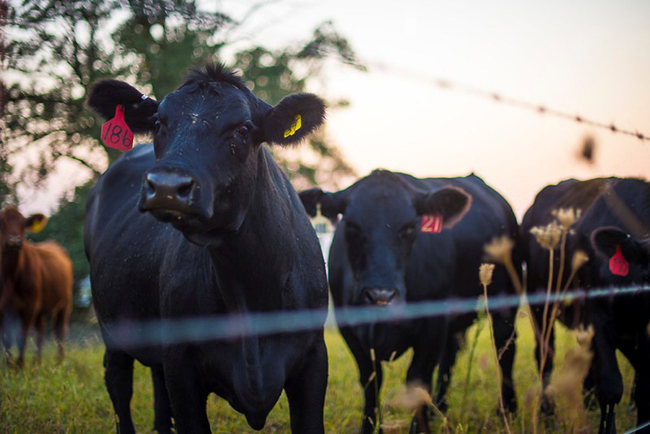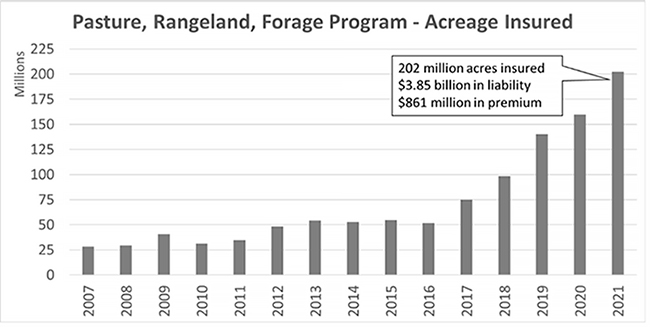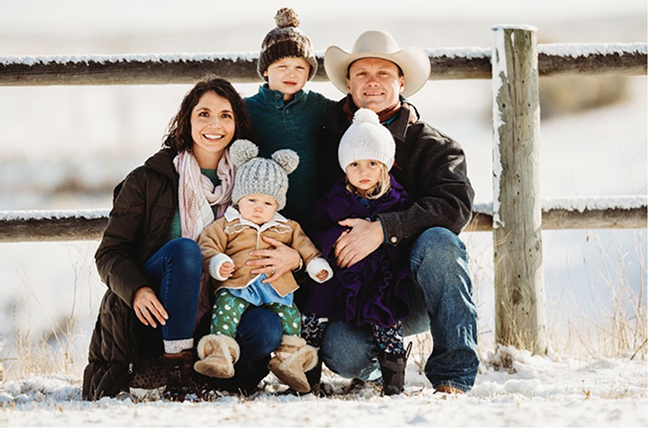August 9, 2021
I’m proud of the many ways we support livestock industries around the country. Over the last year alone we’ve engaged with many ranchers, dairy owners, and stakeholder groups, and always strive to ensure the policies we develop are meeting their needs.
Some real and recent examples of livestock engagements happening coast-to-coast include our Regional Office in Davis, California, attending a webinar hosted by Western United Dairies; our Regional Office in Billings, Montana, holding multiple meetings with the Arapahoe Tribe on livestock insurance; and our Regional Office in Raleigh, North Carolina, working with the Pennsylvania Farm Bureau on corn silage and livestock feed policies.
Perhaps the most important measure of the agency’s engagement with livestock producers is program performance. RMA has seen dramatic increases in participation and coverage levels across livestock insurance plans.
Dairy Revenue Protection (DRP), introduced in 2019, has seen coverage levels increase from approximately 30 billion pounds of insured milk and $5.8 billion in liabilities in its first year, to 52.4 billion pounds insured and $10.9 billion in liabilities recorded so far this year. More than a third of U.S. milk production is now federally insured.
Livestock Risk Protection (LRP) has seen coverage levels leap from more than 400,000 insured head and roughly $150 million in liabilities last year, to a staggering climb of 7.6 million insured head and $2.4 billion in liabilities this year—a 1000% increase.

Cattle grazing in a field outside North English, Iowa. Federal crop insurance policies for Livestock Revenue Protection, or LRP, has seen a dramatic increase in policies sold, from more than 400,000 insured head last year to 7.6 million insured head so far this year. Photo by Preston Keres, USDA
The Pasture, Rangeland and Forage policy, or PRF, has become incredibly popular in the last five years. PRF was expanded in the contiguous 48 states in 2016 and we’ve seen the amount of acreage insured under PRF nearly quadruple since then, from just under 52 million acres in 2016 to 202 million acres in 2021. That’s quite a testament to PRF’s value and effectiveness!

The amount of acreage insured under PRF policies has nearly quadrupled since 2016
2021 has not been the easiest year for ranchers. Much of the country has endured a hard drought season. The U.S. Drought Monitor (USDM), a joint effort of the National Drought Mitigation Center, USDA, and NOAA has categorized much of the area as being in “Extreme Drought.” In such conditions, crops stop growing, pastures go dormant, cattle deaths rise sharply, and large wildfires burn. Of course, crop insurance and USDA relief programs are needed more than ever in such situations.
Casey Coulter and his wife, Lacey, are dealing with the current drought, as they continue to operate a ranch in Montana with livestock that graze on a combination of native rangeland, tame pasture, and cover crops. An environmentally conscious rancher, Casey says these practices have yielded excellent results over the past decade both for the land and cattle. He also told me that USDA is incredibly helpful, with NRCS technical assistance, FSA disaster programs, and RMA insurance products. I was glad to talk with him, find out more about his ranch, and hear his thoughts on our policies.
Richard: I understand your ranch has been in your family for quite a long time.
Casey: My family and I live on my grandparents’ place. I was raised 12 miles north on my parents' ranch. I am the fourth generation and my wife, Lacey, and I have three kids. I moved away after high school and didn't foresee an opportunity to come back to this place. However, I got the chance 11 years ago and enjoy it.
Richard: Tell me about your operation?
Casey: Our ranch is in east central Montana in the small community of Brusett. We have transitioned from a conventional farm, hay, and cattle operation, to a regeneratively managed livestock operation. Our family enjoys working outdoors, setting our own schedule, adding value to livestock, regenerating land, and employing people.

Casey Coulter with his family on their ranch in Brusett, Montana
Richard: I’m sure you face many challenges with extreme adverse conditions, such as drought. What is your opinion of the PRF policy, or other insurance policies for ranchers?
Casey: We are very happy with the PRF program as it gives protection to ranchers for one of their biggest risks, which is lack of precipitation. We have had a PRF policy for the last two years and have been in drought for the last two years, so we are thankful we are participating in the program.
Richard: Would you recommend the policy to other ranchers?
Casey: PRF is a great tool for our operation and we are happy to participate, but as each business is unique, we could not make any recommendations for other businesses. We would encourage livestock operations to look at the PRF program to see if it would help mitigate their drought risk. The stage our business is in makes insurance very necessary. We are not able to self-insure, and PRF has helped us during the last two drought summers.
—
I want to thank Casey for taking time to talk to us about his experiences and offer insights. Our thoughts continue to be with those affected by extreme drought this year.
– Richard
